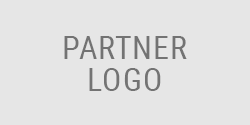What to Know About Federal Student Loan Forgiveness

Are you one of the millions of borrowers with federal student loans? In August 2022, President Biden announced his plan to provide targeted student loan forgiveness to offset the financial challenges caused by the Covid-19 pandemic. The goal is to offer financial relief to millions of student borrowers.
As of right now, no loans have been forgiven because of legal challenges in the works, but it’s still worth signing up for Department of Education updates so you can be notified when applications resume. Here’s an update on what’s going on and what to do.
What is the Proposed Debt Relief Plan?
In case you missed those details, the federal student debt relief plan has three parts.
1. Loan forgiveness
The plan forgives up to $10,000 of debt for qualifying borrowers who didn’t receive a federal Pell Grant, and up to $20,000 for borrowers who did receive a Pell Grant.
2. Expanded income-driven payment plans
To make student loan payments more manageable, the Department of Education is also proposing a new income-driven repayment plan that cuts monthly payments in half by limiting payments to 5% of a borrower’s discretionary income. The current income-driven plans require payments of 10% or 15% of discretionary income.
The other goal is to fix and expand the Public Service Loan Forgiveness (PSLF) program to give appropriate credit to anyone who has worked in nonprofits, the military, and in federal, state, tribal, and local government jobs.
3. Free community college and expanded Pell Grant
The third goal is to make college more accessible by making community college free and doubling the maximum Pell Grant (the 2022 maximum Pell is $6,895).
What’s Going On with Debt Forgiveness at This Point?
Right now, the U.S. Department of Education isn’t allowed to provide the one-time debt relief while lawsuits brought by six states are being sorted out. The one-time pandemic debt relief is on hold due to an injunction issued by the court of appeals.
If you haven’t filled out the application, watch for updates from the Department of Education indicating the portal has reopened.
How Do I Qualify for Student Loan Forgiveness?
Not everyone qualifies for one-time debt relief. You must meet the income threshold:
- Individuals who made less than $125,000 in 2021 or 2020 (don’t need to meet it for both years)
- Families that made less than $250,000 in 2021 or 2020 (don’t need to meet it for both years)
According to the StudentAid.gov website, income requirements are based on your Adjusted Gross Income (AGI), which can be found on line 11 of your 1040 tax return. Usually, your AGI is lower than your total income.
What Kinds of Loans are Eligible?
Most federal loans qualify, including undergraduate direct loans, graduate PLUS and Parent PLUS loans disbursed before July 1, 2022. (Yes, parent borrowers qualify too!) Check this Studentaid.gov information for more on qualifying loan types and disbursement dates.
Any loans disbursed after July 1, 2022 aren’t eligible. Also, private loans aren’t eligible.
I Heard I Can Get a Refund on Past Payments — Is that True?
You could qualify for a refund depending on your situation. Here’s how it works. Say you made payments after March 2020 and the current balance on your loan is below the amount of debt relief you will receive. Those payments qualify for a refund of the difference between what you paid and what you were eligible to receive through the relief program. March 2020 was when the federal administrative forbearance went into place. If you made payments on your loans or paid them off during the pandemic, you can request a refund on these payments up to the amount of forgiveness you are eligible for from your servicer.
For example, take the situation of someone who is eligible to receive $20,000 in debt relief. This borrower originally had $15,000 in loans but paid $5,000 between March 2020, leaving a current loan balance of $10,000. That balance is below the $20,000 in debt relief the person is eligible for, so this borrower qualifies for a $5,000 refund of the payments made during that time period — and up to $15,000 loan forgiveness.
Do I Have to Pay Taxes on Forgiven Student Loans?
Not in most places, but it depends on your state. Congress eliminated taxes on student loan forgiveness through 2025. However, some states intend to tax forgiven student debt (notably Indiana and Mississippi), so you should monitor the laws in your state.
How Do I Apply and What is the Deadline?
When the application reopens, the process is incredibly simple. Fill out the short application on the Department of Education website. It asks for your name, Social Security number, date of birth, and contact information (email and phone number). Then you have to affirm that your income qualifies by checking a box and signing a digital signature. That’s it. The process only takes a few minutes.
For some borrowers, you won’t have to do anything at all. As the studentaid.gov website explains, “If you completed a Free Application for Federal Student Aid (FAFSA®) form for the 2022–23 school year or are enrolled in an income-driven repayment plan based on your 2020 or 2021 income, you may be eligible for relief without applying.” If you qualify for automatic student loan relief, but don’t want to participate, you need to contact your loan servicer directly and let them know that you’re opting out.
For relief applicants, the Department of Education may request more information (including proof of income) if needed. If you were a dependent student in college during the pandemic, you still qualify for the same amount of debt relief, but one or both of your parents’ incomes will be used to verify qualifying income, not yours.
The last day to apply is December 31, 2023.
The Department of Education will start processing relief requests as soon as they’re allowed.
What About the Current Payment Freeze?
The current freeze/deferment on loan payments was scheduled to end on December 31, 2022, until it was extended once again in response to the delays implementing the one time debt relief. Per the Biden-Harris Administration, "Payments will resume 60 days after the Department is permitted to implement the program or the litigation is resolved. If the program has not been implemented and the litigation has not been resolved by June 30, 2023 – payments will resume 60 days after that."
Have you thought about how you’re going to handle your student loan payments when the payment freeze ends next year? Many people have gotten out of the habit of budgeting for this expense. It’s important to make sure you’re on the right repayment plan for your income and loans. We provide confidential and secure student loan counseling, available online and over the phone. Best of all, student loan counseling is free through March 31, 2023. Start today!
















